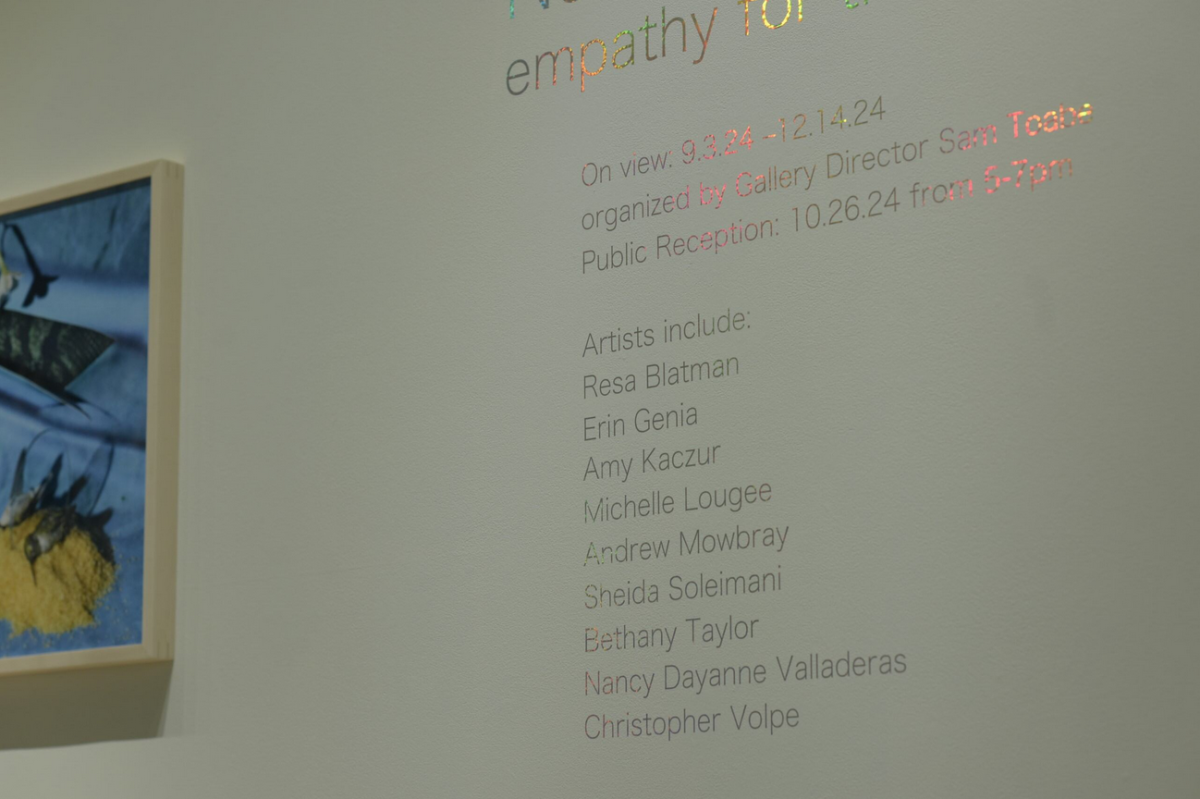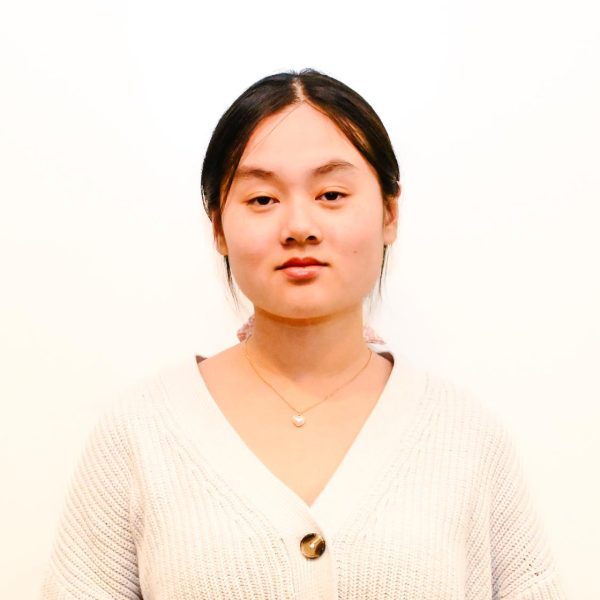As the threat of climate change looms over the planet, the need to address it on both a global and local scale grows more essential. At the University Hall Gallery, gallery director and curator Sam Toabe gathers artists of all kinds to address climate change in the exhibition, “Nurture: Empathy for the Earth.”
The exhibition arrives in tandem with “Thinking about Climate Change: Art, Science and Imagination through the 21st Century,” a conference on UMass Boston campus in October. Toabe says he was invited by Dr. Margaret Hart and Carol Scollans “to organize an exhibition to complement it.”
“I’ve been invested in issues of climate change for a long time,” he said. “I am interested in how artists are able to portray these complex issues through humanitarian means. Personal and empathetic responses to these issues can feel really large, almost incomprehensible.”
Toabe gathered together nine artists who specialize in various mediums to communicate their thoughts on environmental issues. The artists include Resa Blatman, Erin Genia, Amy Kaczur, Michelle Lougee, Andrew Mowbray, Sheida Soleimani, Bethany Taylor, Nancy Valladares and Christopher Volpe.
One of the artists, Amy Kaczur, shows how East Coast marshes have faced severe changes that could prove detrimental to their ecosystems. “After a few extreme weather events,” Kaczur said. Kaczur and her partner “noticed how decimated the area was after three nor’easters in one month. I started to look at the flooding’s impact on the coastline, including erosion and the sea level rising. Then, I began video taping.”
Kaczur’s video project, “Messages from the Marsh,” features a murky underwater universe that would be completely destroyed by erosion and rising sea levels. She started with local marshes in Massachusetts and the surrounding New England area, but will continue the project down the whole East Coast of the United States.
Parts One through Three are currently installed, while Parts Four through Six will be shown toward the end of October.
Michelle Lougee’s work highlights the fragile relationship between humans and the environment, and the enduring presence of plastic in natural settings. “I want people to think more about the environment, how to care for it, and ways to reduce your plastic consumption,” she said.
“Souvenir Series” pairs organic materials with discarded post-consumer plastic, creating a juxtaposition of items found naturally and made synthetically. Each souvenir piece is arranged together to imitate a cabinet of curiosities. Lougee calls them souvenirs because “some of these things might not be available to us forever.”
“We’ll have to break the plastic to get the seeds out or open the packaging,” she said.
Hung from the ceiling, Bethany Taylor’s jacquard woven tapestries showcase the temporality of life and the ease with which the landscape can change. With threads unraveling at the bottom, “Arctic Blue Melt” and “Gulf of Mexico Spill (Deepwater Horizon)” are a part of a larger series called “Unraveling Ecologies.” The beauty of the tapestries is that they can be displayed individually or together in different combinations.
“I try to connect different locations in the world. The whole idea is their ecologies are completely connected. If the glaciers melt, Florida goes underwater,” Taylor said. “We don’t have idyllic, separate landscapes. I wanted to try to capture some idea that they’re constantly in flux and changing.”
At the center of the gallery space, Nancy Valladares’s piece emphasizes the environmental cost behind photography and visual culture. For example, they mentioned how silver is used extensively in analog photography, but that the procedures to purify it are very toxic.
“Every image that we make has an environmental weight,” Valladares said. “It’s just that it’s not always visible or it’s not always something that we think.”
To create “A Membrane is the Color of Rust,” Valladares referenced the darkroom process. They dripped spent photographic fixative and silver nitrate — donated from the UMass Boston’s darkroom photography lab — through a separator funnel onto a silver sensitized platform. The fixative stabilized the silver, allowing it to oxidize and visibly darken over time.
As students explore the art featured in the exhibition, Toabe hopes that it can help spark more conversations about climate change and facilitate more involvement through direct action.
“I would want students to come away with a sense that they have agency in how they want to confront issues of climate change,” Toabe said.
“Nurture: Empathy for the Earth” is on display now until the end of the Fall 2024 semester. The “Thinking about Climate Change: Art, Science and Imagination through the 21st Century” conference will be located in the Campus Center Ballroom on Oct. 25 and 26.
On the last day of the conference, a public reception will be held at the University Hall Gallery from 5 p.m. to 7 p.m. to celebrate the artists and the exhibition. Light refreshments will be served, and student-poet Helina Almonte will perform her original poem.
Students can register online and find the program for the conference by searching “Thinking about Climate Change” on the UMass Boston website.




